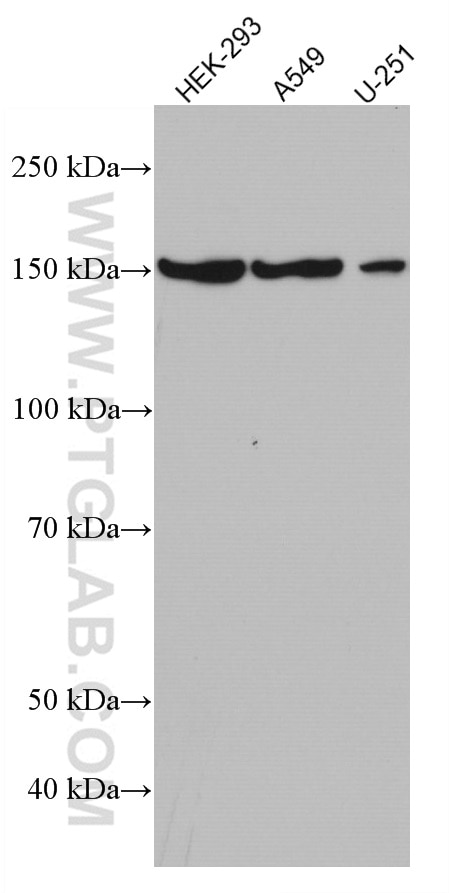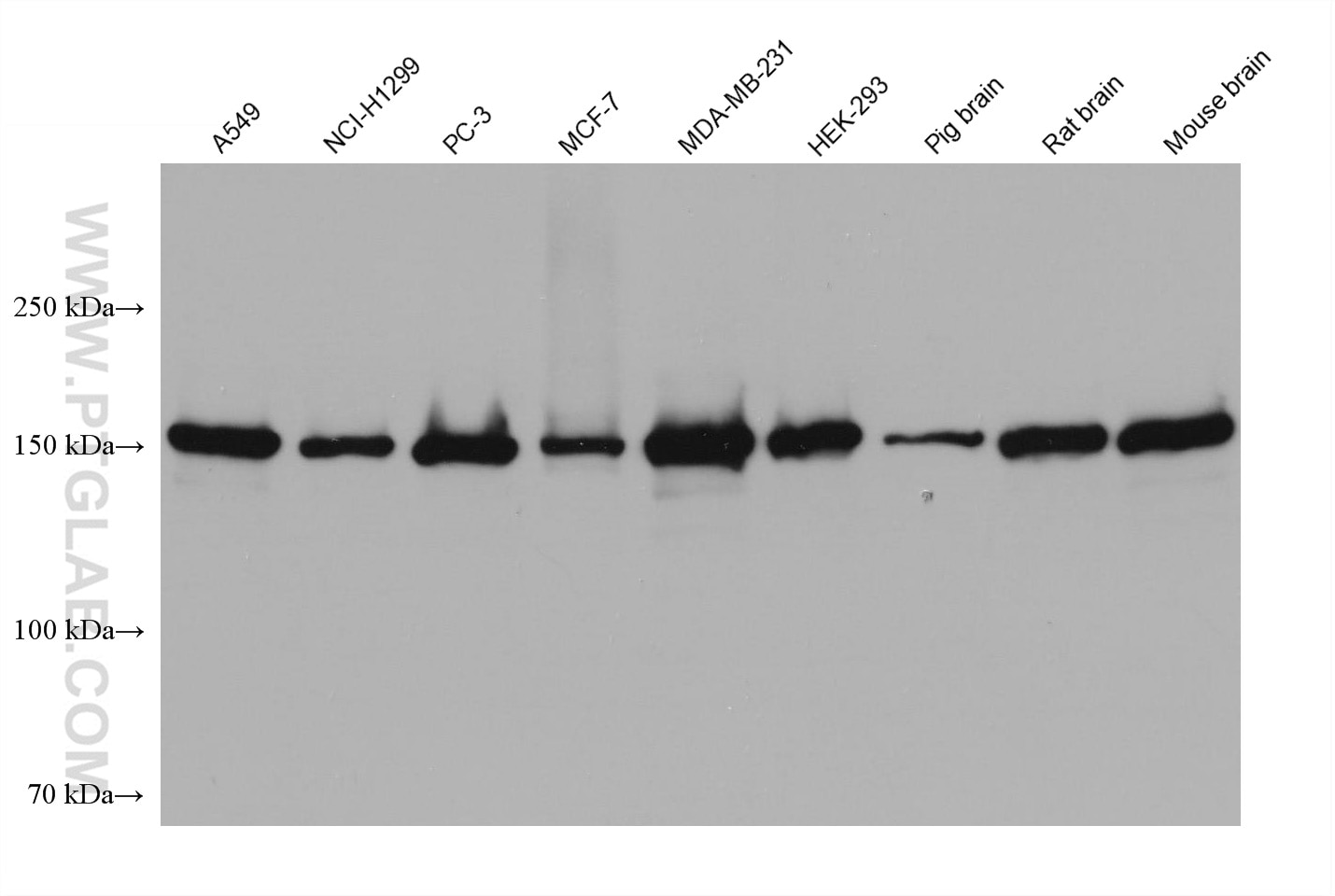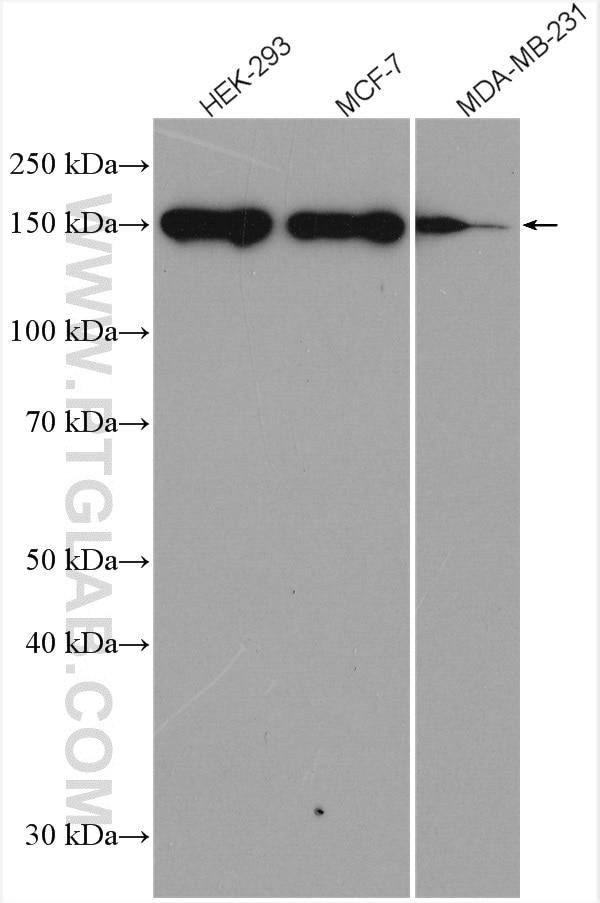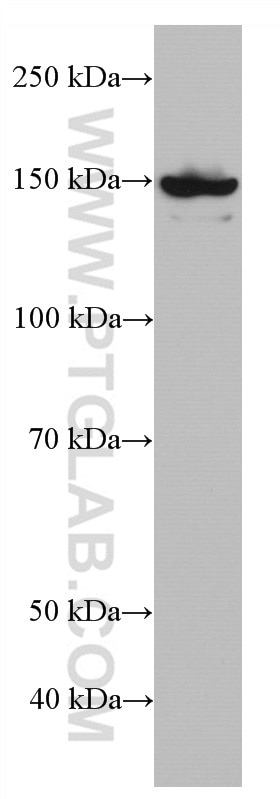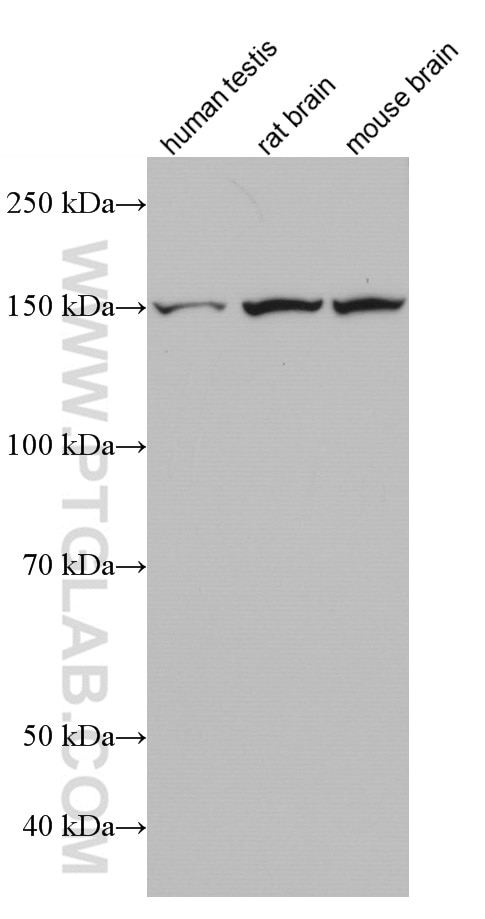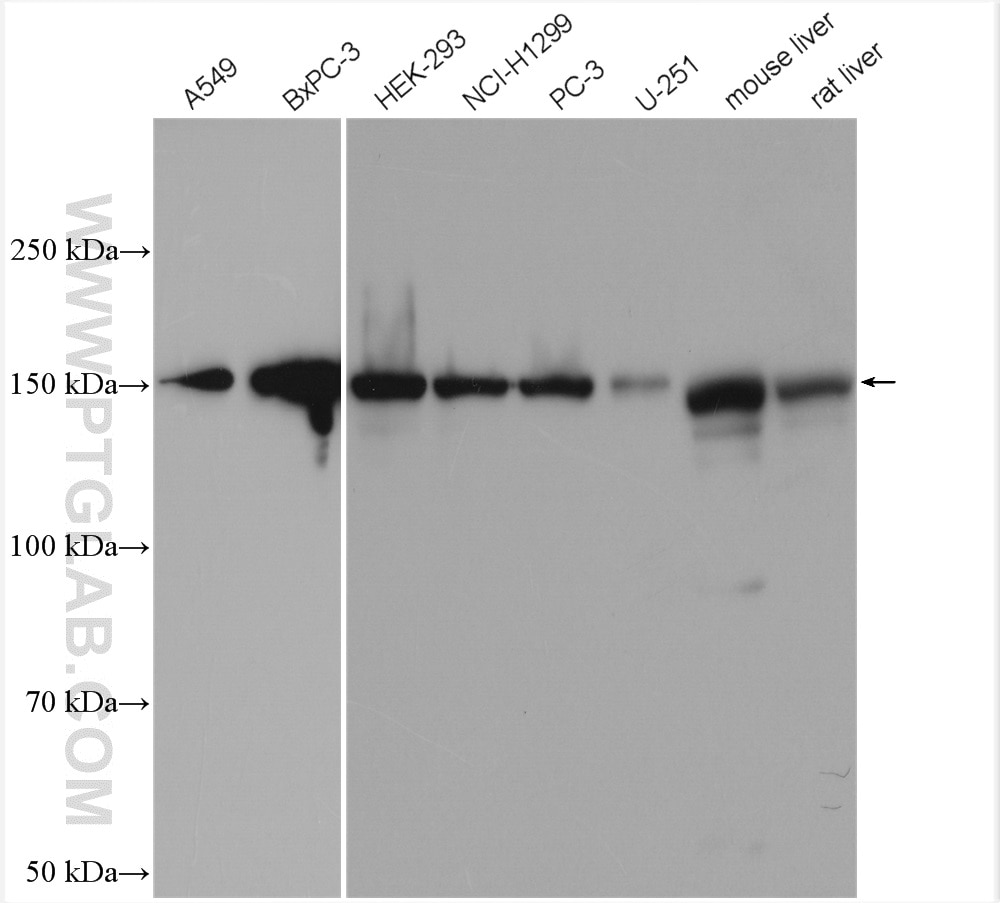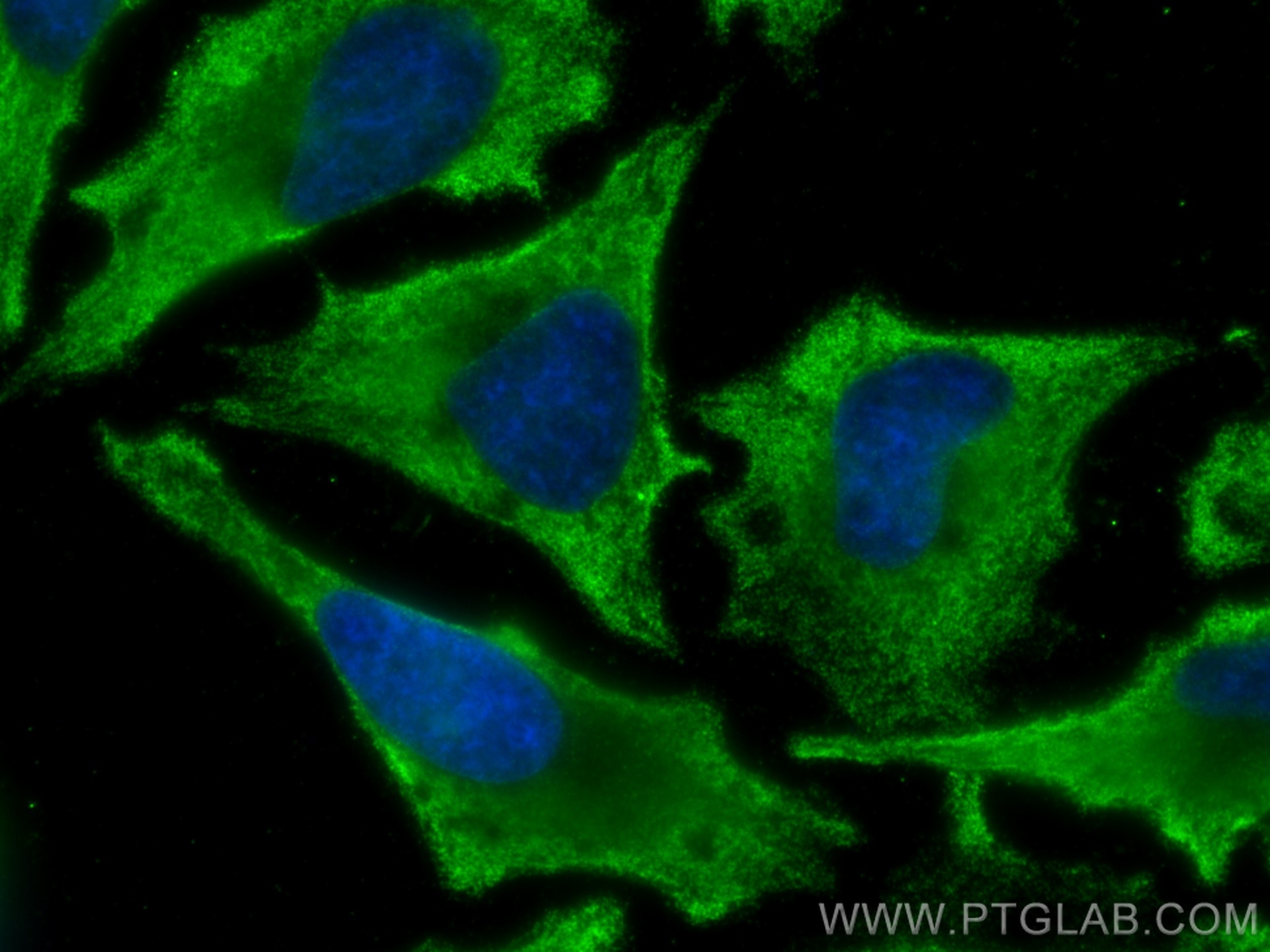- Featured Product
- KD/KO Validated
GLI1 Monoklonaler Antikörper
GLI1 Monoklonal Antikörper für IF, WB, ELISA
Wirt / Isotyp
Maus / IgG1
Getestete Reaktivität
Hausschwein, human, Maus, Ratte
Anwendung
WB, IHC, IF, CoIP, ELISA
Konjugation
Unkonjugiert
CloneNo.
1D2B2
Kat-Nr. : 66905-1-Ig
Synonyme
Galerie der Validierungsdaten
Geprüfte Anwendungen
| Erfolgreiche Detektion in WB | A549-Zellen, BxPC-3-Zellen, C6-Zellen, Hausschwein-Hirngewebe, HEK-293-Zellen, humanes Hodengewebe, Maushirngewebe, Mauslebergewebe, MCF-7-Zellen, MDA-MB-231-Zellen, NCI-H1299-Zellen, Rattenhirngewebe, Rattenlebergewebe, U-251-Zellen |
| Erfolgreiche Detektion in IF | HeLa-Zellen |
Empfohlene Verdünnung
| Anwendung | Verdünnung |
|---|---|
| Western Blot (WB) | WB : 1:5000-1:50000 |
| Immunfluoreszenz (IF) | IF : 1:400-1:1600 |
| It is recommended that this reagent should be titrated in each testing system to obtain optimal results. | |
| Sample-dependent, check data in validation data gallery | |
Veröffentlichte Anwendungen
| KD/KO | See 5 publications below |
| WB | See 58 publications below |
| IHC | See 11 publications below |
| IF | See 7 publications below |
| CoIP | See 1 publications below |
Produktinformation
66905-1-Ig bindet in WB, IHC, IF, CoIP, ELISA GLI1 und zeigt Reaktivität mit Hausschwein, human, Maus, Ratten
| Getestete Reaktivität | Hausschwein, human, Maus, Ratte |
| In Publikationen genannte Reaktivität | human, Maus, Ratte |
| Wirt / Isotyp | Maus / IgG1 |
| Klonalität | Monoklonal |
| Typ | Antikörper |
| Immunogen | GLI1 fusion protein Ag27832 |
| Vollständiger Name | GLI family zinc finger 1 |
| Berechnetes Molekulargewicht | 1106 aa, 118 kDa |
| Beobachtetes Molekulargewicht | 150 kDa |
| GenBank-Zugangsnummer | BC013000 |
| Gene symbol | GLI1 |
| Gene ID (NCBI) | 2735 |
| Konjugation | Unkonjugiert |
| Form | Liquid |
| Reinigungsmethode | Protein-A-Reinigung |
| Lagerungspuffer | PBS mit 0.02% Natriumazid und 50% Glycerin pH 7.3. |
| Lagerungsbedingungen | Bei -20°C lagern. Nach dem Versand ein Jahr lang stabil Aliquotieren ist bei -20oC Lagerung nicht notwendig. 20ul Größen enthalten 0,1% BSA. |
Hintergrundinformationen
GLI1, also known as Glioma-associated oncogene, is a 1106 amino acid protein, which belongs to the GLI C2H2-type zinc-finger protein family. GLI1 is detected in testis and Also expressed in the brain with highest expression in the cerebellum, optic nerve and olfactory tract. GLI1 is tethered in the cytoplasm by binding to SUFU (PubMed:10806483). GLI1 is activated and translocated to the nucleus promoted by interaction with STK36 (PubMed:10806483). Phosphorylation of GLI1 by ULK3 may promote nuclear localization (PubMed:19878745). GLI1 as a transcriptional activator may regulate the transcription of specific genes during normal development (PubMed:19706761). GLI1 plays a role in craniofacial development and digital development, as well as development of the central nervous system and gastrointestinal tract and Mediates SHH signaling (PubMed:19706761). GLI1 plays a role in cell proliferation and differentiation via its role in SHH signaling.
Protokolle
| Produktspezifische Protokolle | |
|---|---|
| WB protocol for GLI1 antibody 66905-1-Ig | Protokoll herunterladen |
| IF protocol for GLI1 antibody 66905-1-Ig | Protokoll herunterladen |
| Standard-Protokolle | |
|---|---|
| Klicken Sie hier, um unsere Standardprotokolle anzuzeigen |
Publikationen
| Species | Application | Title |
|---|---|---|
Mol Cancer Circular RNA circIPO11 drives self-renewal of liver cancer initiating cells via Hedgehog signaling. | ||
Nat Commun TSPAN8 promotes cancer cell stemness via activation of sonic Hedgehog signaling. | ||
J Exp Clin Cancer Res ACTN1 promotes HNSCC tumorigenesis and cisplatin resistance by enhancing MYH9-dependent degradation of GSK-3β and integrin β1-mediated phosphorylation of FAK | ||
JCI Insight Mutations in OSBPL2 cause hearing loss associated with primary cilia defects via Sonic Hedgehog signaling. | ||
Cancer Immunol Res Remodeling Chondroitin-6-Sulfate-Mediated Immune Exclusion Enhances Anti-PD-1 Response in Colorectal Cancer with Microsatellite Stability. | ||
Phytother Res Total flavonoid extract from Dracocephalum moldavica L. improves pulmonary fibrosis by reducing inflammation and inhibiting the hedgehog signaling pathway |
Rezensionen
The reviews below have been submitted by verified Proteintech customers who received an incentive forproviding their feedback.
FH Boyan (Verified Customer) (07-23-2019) | In my experiment, I used the untreated and Shh ligand-treated cell lysates, in which the protein level of Gli1 should be increased after Shh treatment.With these two samples, I could detect a significant induction of the Gli1 protein using another Gli1 antibody. But, I could not see this induction with this antibody (66905-1-lg). A tricky thing is that, comparing with the real Gli1 band shown by the other antibody, this antibody (66905-1-lg) could recognise a protein at a similar molecular weight (but a little higher than that real Gli1). I think this is misleading, because although being shown on the website, that band is not the real band of Gli1.
|
FH Joshua (Verified Customer) (04-28-2019) | Cells paraformaldehyde fixed and stained for GLI1 (red). Counterstained with DRAQ7 (blue). Observed mixed nuclear/cytosolic staining as expected for GLI1.
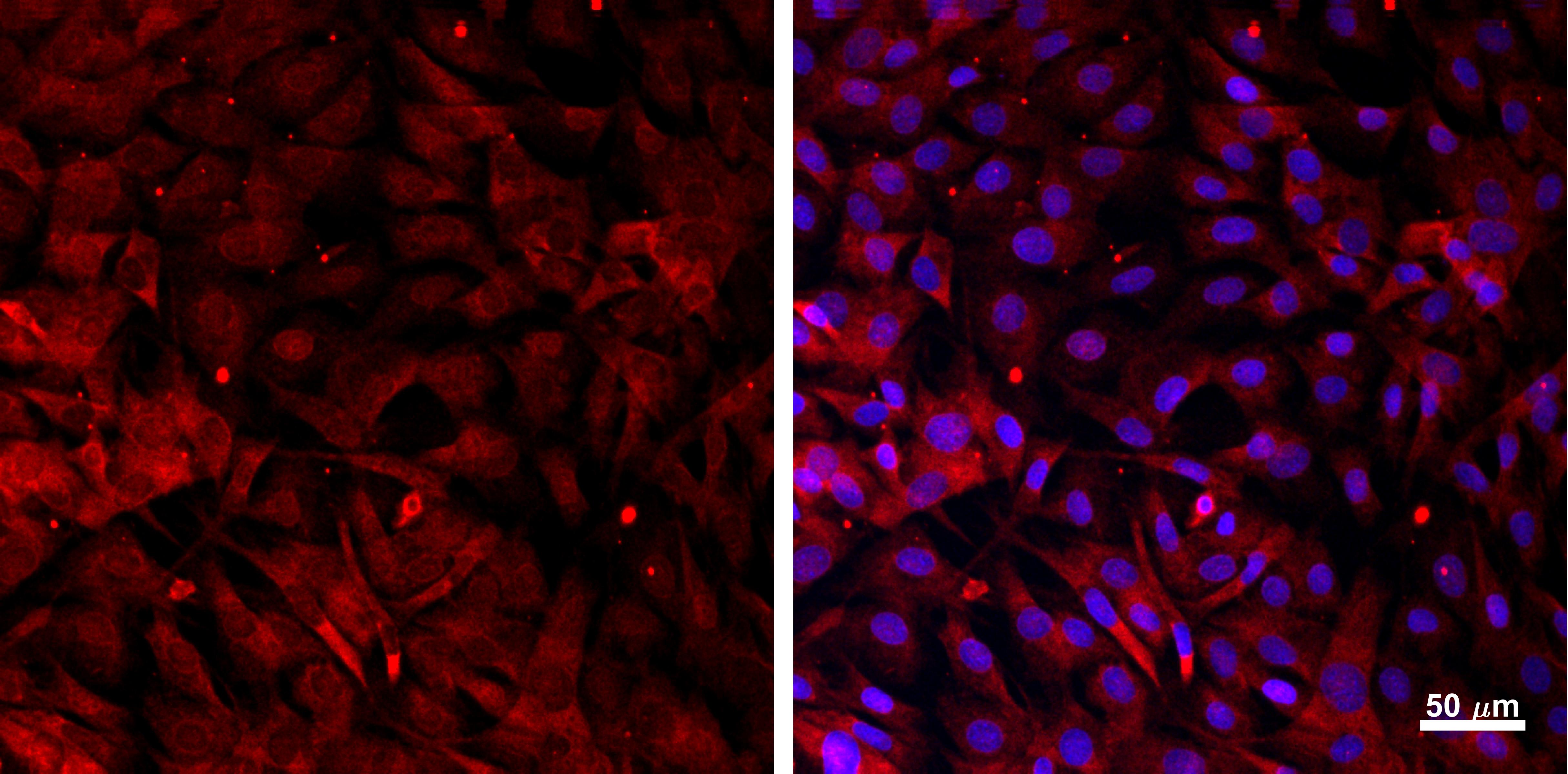 |
